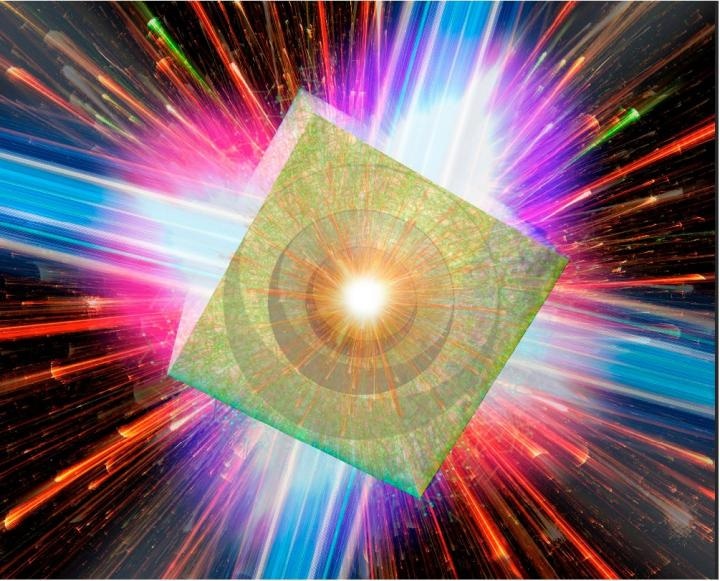Jul 10 2019
In general, “vacuum” is considered to be nothing but vacant space. However, in reality, a vacuum is composed of “virtual particle-antiparticle pairs” of electrons and positrons that constantly form and get annihilated in unbelievably short time periods.
 Envisioned picture showing all of the main events of microbubble implosion, i.e., laser illumination, hot electron spread, implosion, and proton flash at the end. (Image credit: M. Murakami)
Envisioned picture showing all of the main events of microbubble implosion, i.e., laser illumination, hot electron spread, implosion, and proton flash at the end. (Image credit: M. Murakami)
The pursuit to gain better insights into vacuum physics will provide the answers to fundamental questions in modern physics, which is essential to unearth the mysteries of space exploration, for example, the Big Bang.
Yet, the laser intensity needed to forcibly isolate the virtual pairs with the electric field of a laser and make them appear not as virtual particles but real particles would be 10 million times greater than what existing laser technology is capable of. This field intensity is what is called the “Schwinger limit,” named after Julian Schwinger, an American Nobel laureate, five decades ago.
In 2018, researchers from Osaka University invented an innovative mechanism termed as microbubble implosion (MBI). MBI involves emitting super-high energy hydrogen ions (relativistic protons) at the instant when bubbles contract to atomic size via the irradiation of hydrides with micron-sized spherical bubbles by ultrashort, ultraintense laser pulses.
As part of the research, the team headed by Masakatsu Murakami demonstrated that it is possible to achieve an ultrahigh electrostatic field close to the Schwinger field at the time of MBI since micron-sized bubbles encapsulated in a solid hydride target collapse to have nanometer-sized diameters once they are ionized.
The 3D simulations performed at the Osaka University Institute of Laser Engineering revealed that the density at the time of the maximum compression of the bubble attains a solid density of several hundred thousand to one million times. Such a density makes something no bigger than a sugar lump weigh a few hundred kilograms.
It was found that the energy density at the bubble center was nearly one million times higher than that at the sun. It is considered that these overwhelming numbers are impossible to achieve on Earth. The study outcomes have been reported in Physics of Plasmas.